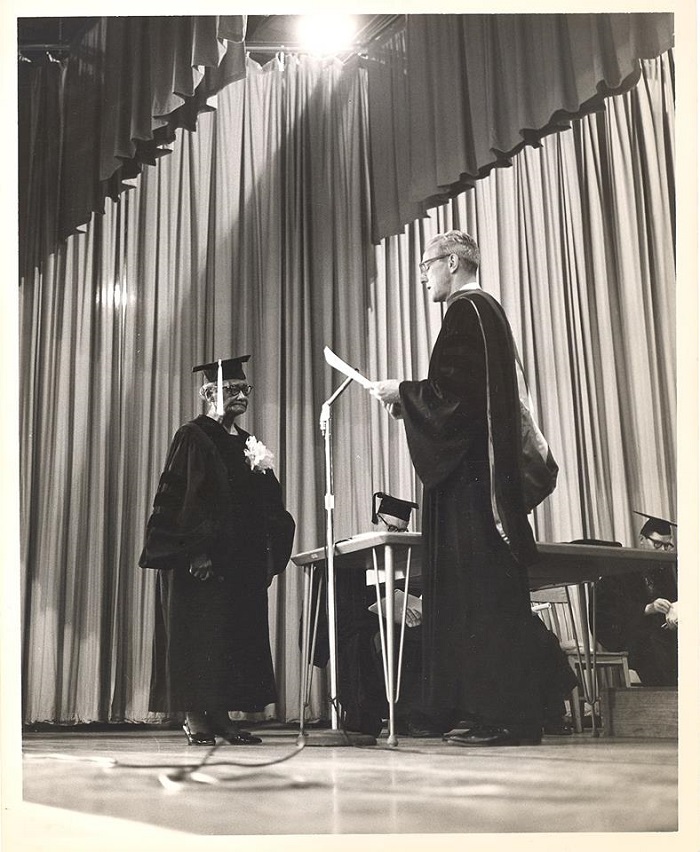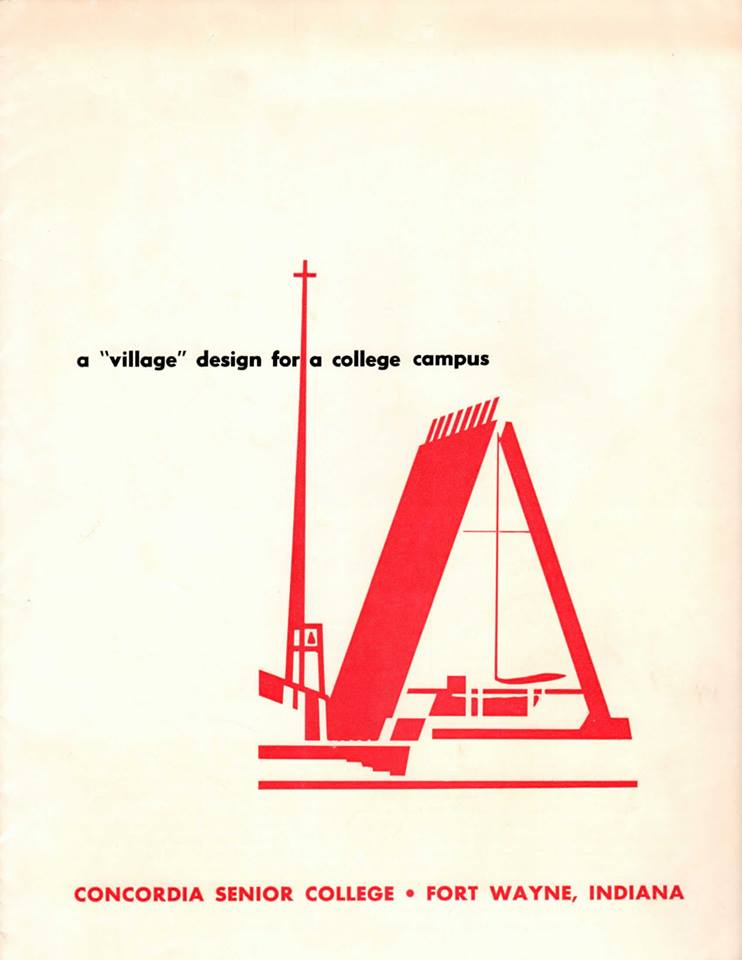Sixty years ago, on Friday, May 30, 1958, dedication festivities began for the new Concordia Senior college; what would someday become our CTSFW campus.
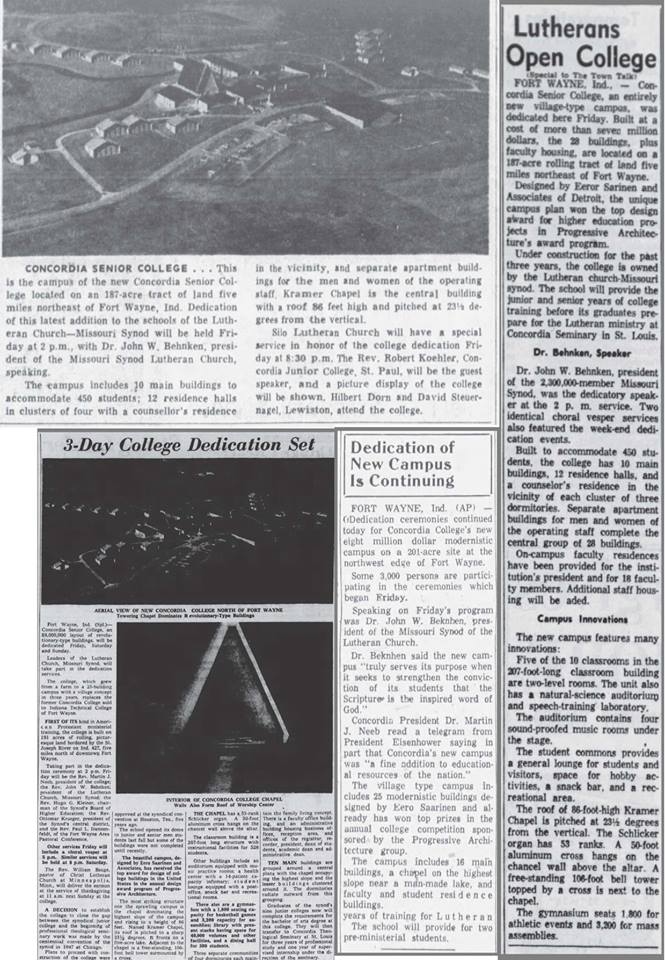 The dedication was big news back in the day. It made such publications as the Vidette-Messenger of Porter County, the Hartford Courant, The Minneapolis Star, The Terre Haute Star, The Indianapolis Star, The Times (Munster, Indiana), The Winona Daily News, and The Town Talk (Alexandria, Louisiana).
The dedication was big news back in the day. It made such publications as the Vidette-Messenger of Porter County, the Hartford Courant, The Minneapolis Star, The Terre Haute Star, The Indianapolis Star, The Times (Munster, Indiana), The Winona Daily News, and The Town Talk (Alexandria, Louisiana).
In the course of the search, we also unearthed this photo of a Concordia Senior College class back in October of 1967, taught by Dr. Ludwig. Below it is the exact same classroom, taken 49 years later in October of 2016, this time of Concordia Theological Seminary students. That’s Kantor Kevin Hildebrand teaching the class on the left with Dr. Grime on his right.
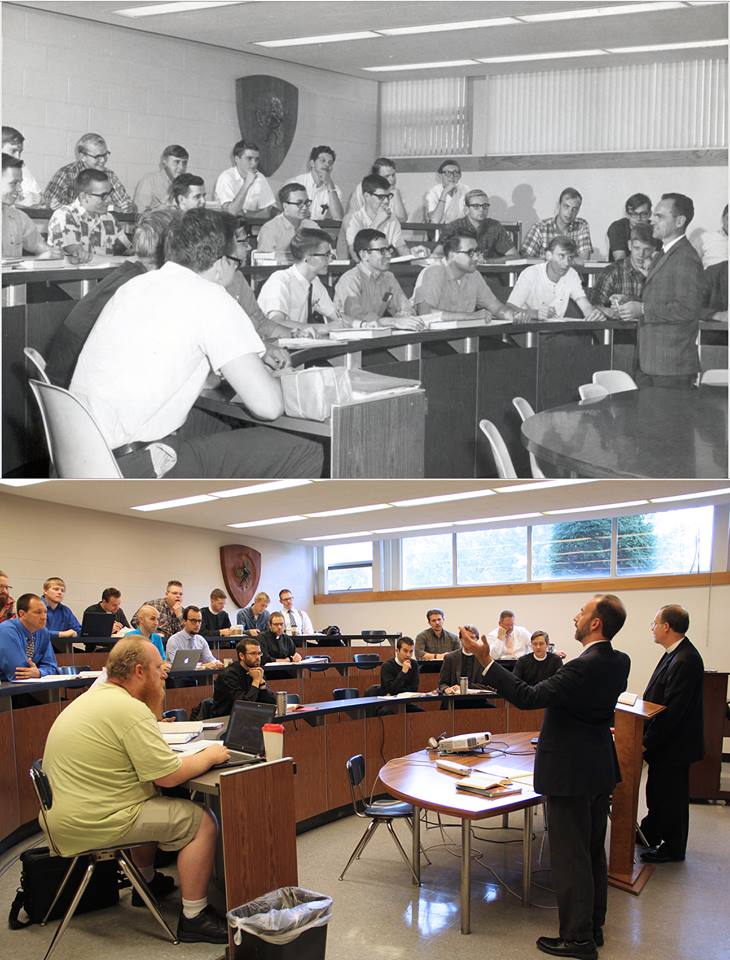
The Dedicatory Service itself on May 30, 1958 opened with the hymn “Come, Holy Ghost, God and Lord” (224 in the TLH back in the 50s, and now hymn number 497 in the LSB), then continued with the following:
V. In the name of the Father, and of the Son, and of the Holy Ghost
R. Amen
V. Our Help is in the name of the Lord
R. Who made heaven and earth
V. I will go unto the altar of God, unto God my exceeding joy. O send out Thy light and Thy truth: let them lead me; let them bring me unto Thy holy hill, and to Thy tabernacles, that I may go unto the altar of God, unto God my exceeding joy, and praise Thee, O God, my God.
R. Glory be to the Father, and to the Son, and to the Holy Ghost. As it was in the beginning, is now and ever shall be, world without end. Amen.
The Officiant shall say:
Let us now dedicate this campus, with all of its buildings and facilities, to the honor and service of the Triune God. To Thee, O Lord, we dedicate the chapel, that it may be a house of prayer and praise for all who live and worship here, wherein Thy saving Word may be proclaimed and Thy Sacraments administered according to Thy command and promise.
Congregation:
May Thy people ever love the habitation of Thy house, and the place where Thine honor dwelleth.
Officiant:
To Thee, O Lord, we dedicate the buildings set aside for study, for instruction, for culture, for counsel, and for the administration of this school, that men may come to know Thee better through Thy Word and works, to foster those things that please Thee, and to serve Thee through the wisdom which Thou alone canst give.
Congregation:
Grant that those who teach and those who learn may grow in the knowledge of Thee and in love to their fellow-men.
Officiant:
To Thee, O Lord, we dedicate the residential quarters on this campus, for students and for staff, that those who dwell there may find rest for their bodies, quiet for their work, and the spirit of love and fellowship through the indwelling of Thy Spirit.
Congregation:
May the coming in and going out of those who dwell there be ever in the name of the Lord, and may Christ be the ever-present Guest under every roof.
Officiant:
To Thee, O Lord, we dedicate the service facilities and buildings, that there men may find refreshment for their daily tasks, health of body, and the opportunity to serve Thee, from whom cometh every good and perfect gift.
Congregation:
Bless unto those who serve and unto those who are served, the hours which they spend between these walls.
Officiant:
To Thee, O Lord, we dedicate the recreational facilities, the fields and grounds of this campus, that in their beauty and their utility, they may glorify Thee and serve the welfare of Thy people.
Congregation:
May Thy people ever use Thy gifts and benefactions to the honor of Thy name and to the service of their fellow-men.
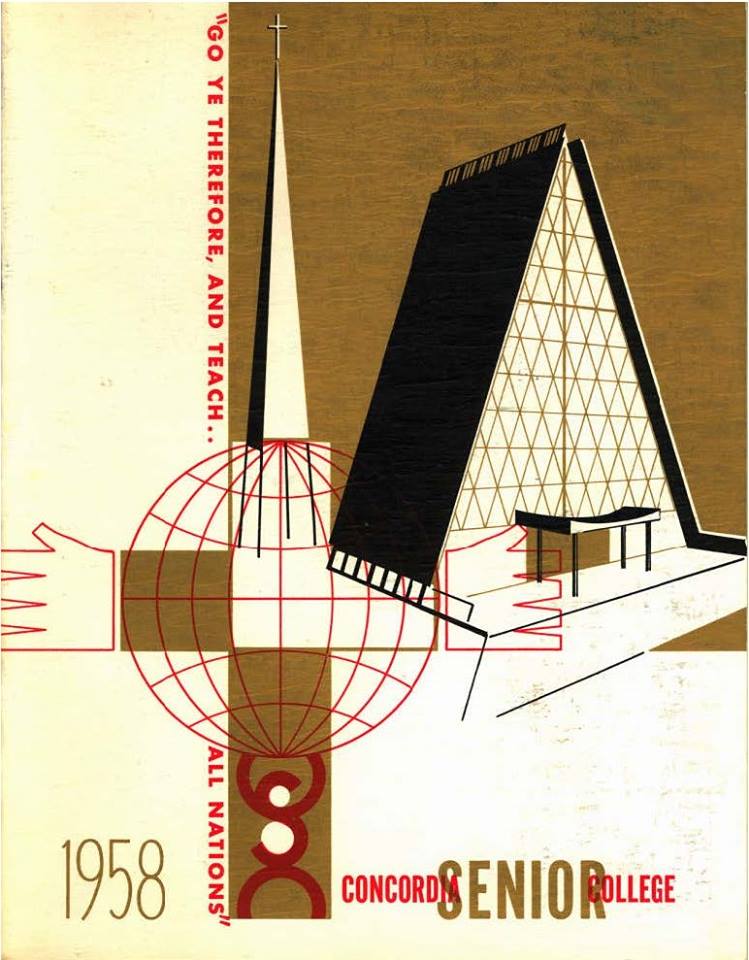
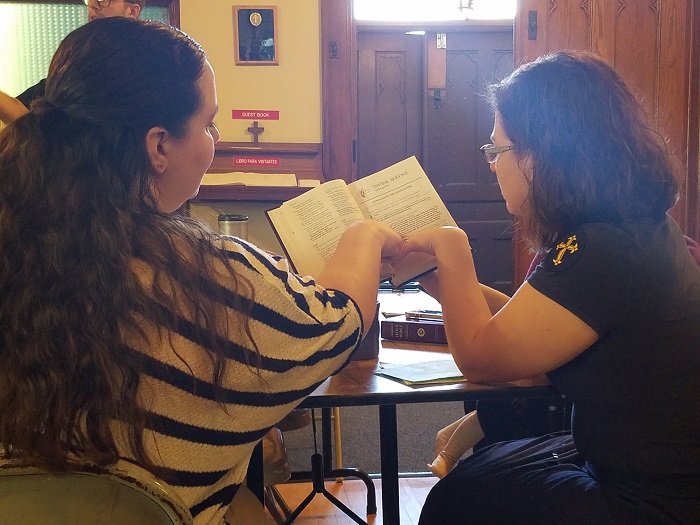
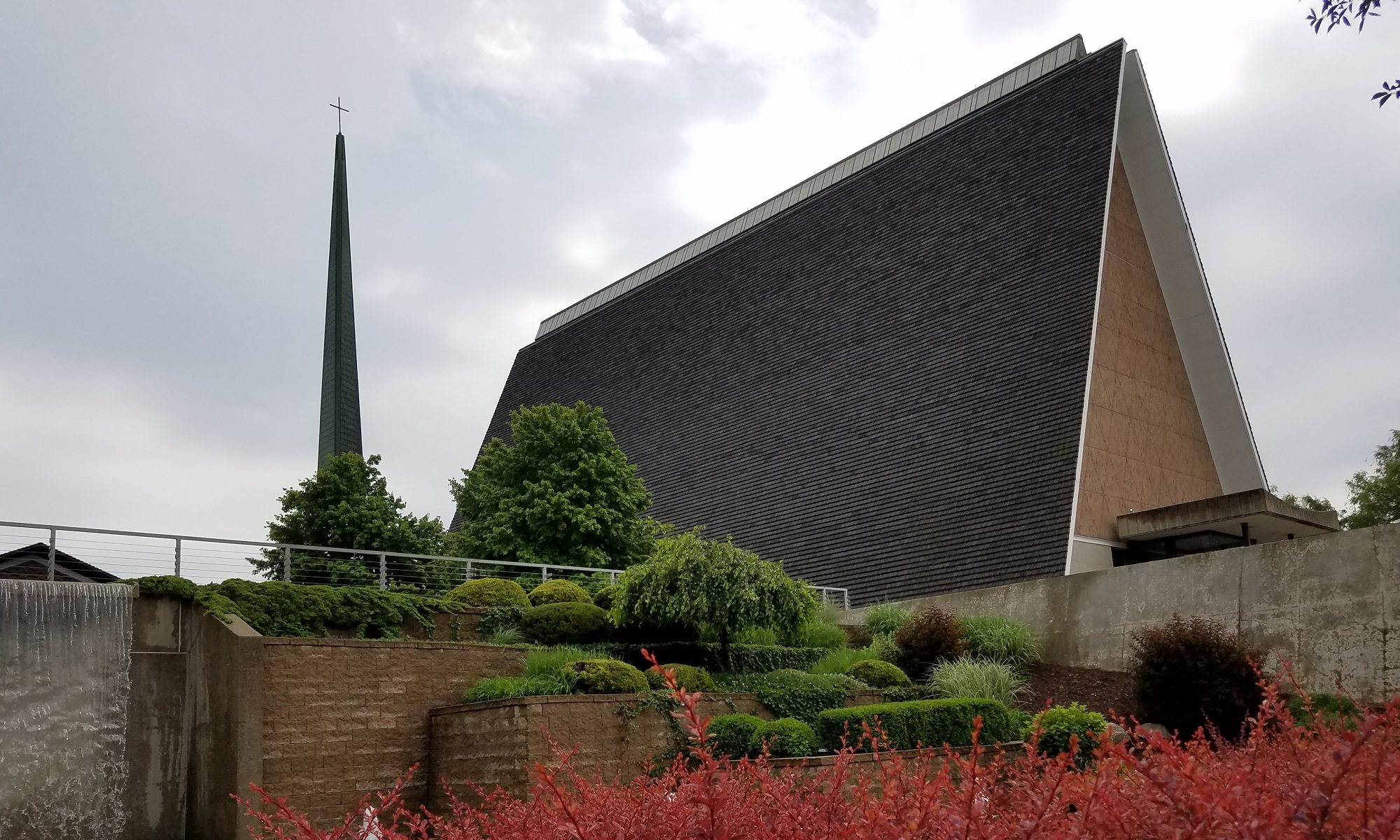
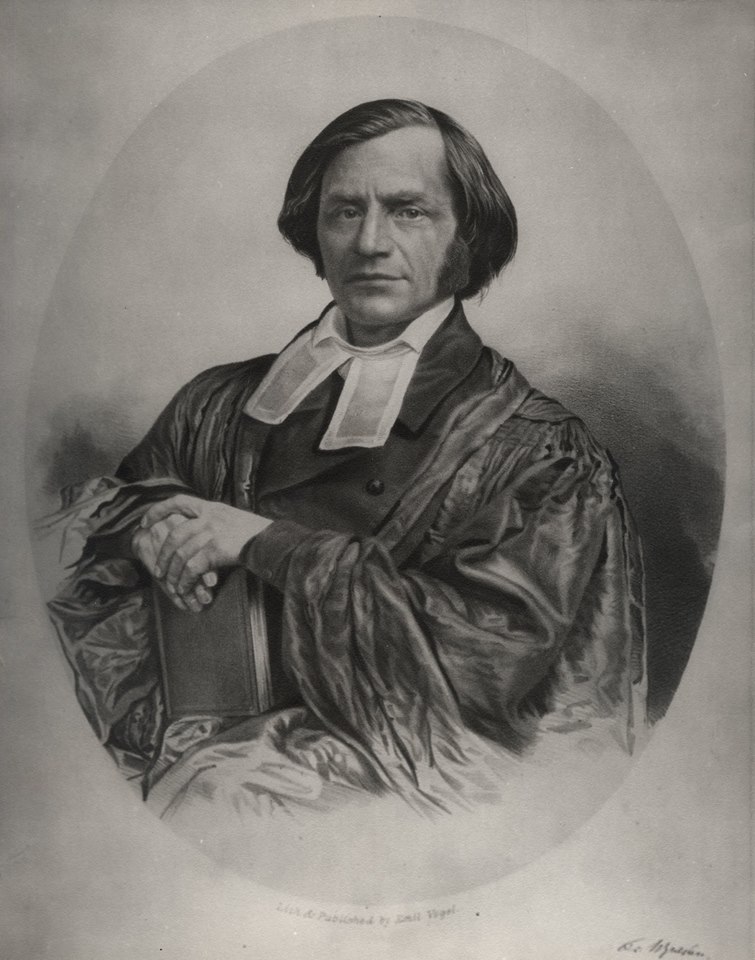 Short history lesson this afternoon, from one of our librarians, Rev. Bob Smith, who likes to research our forefathers in his spare-time. We talk a lot about Friedrich Wyneken here at CTSFW (and for good reason: he was instrumental not only in the formation of our seminary but in the LCMS itself; his is the voice that called out in distress to his homeland, pleading for them to send more Lutheran pastors and missionaries to the German pioneers), but there are still some unans
Short history lesson this afternoon, from one of our librarians, Rev. Bob Smith, who likes to research our forefathers in his spare-time. We talk a lot about Friedrich Wyneken here at CTSFW (and for good reason: he was instrumental not only in the formation of our seminary but in the LCMS itself; his is the voice that called out in distress to his homeland, pleading for them to send more Lutheran pastors and missionaries to the German pioneers), but there are still some unans


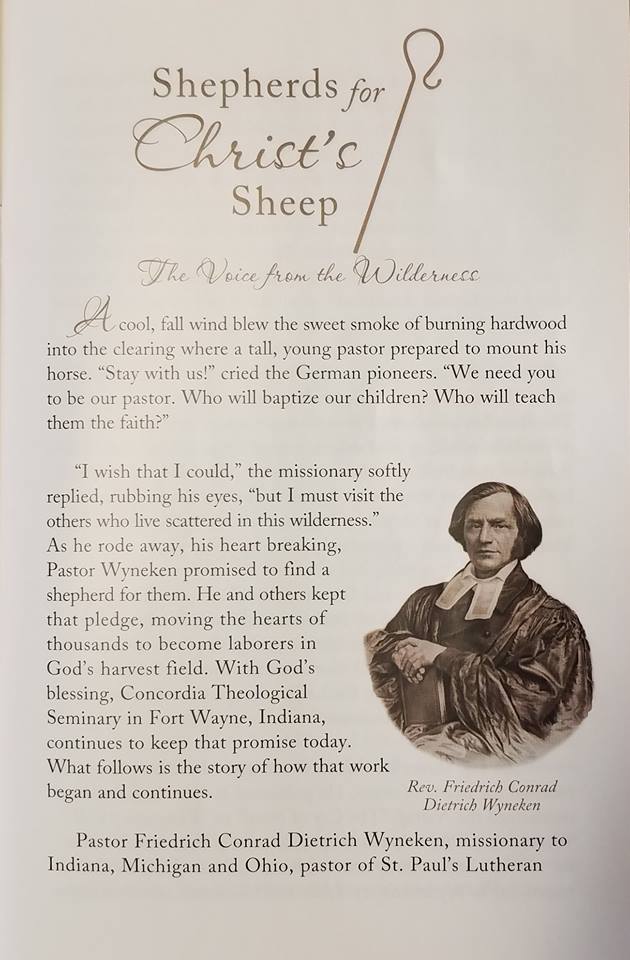
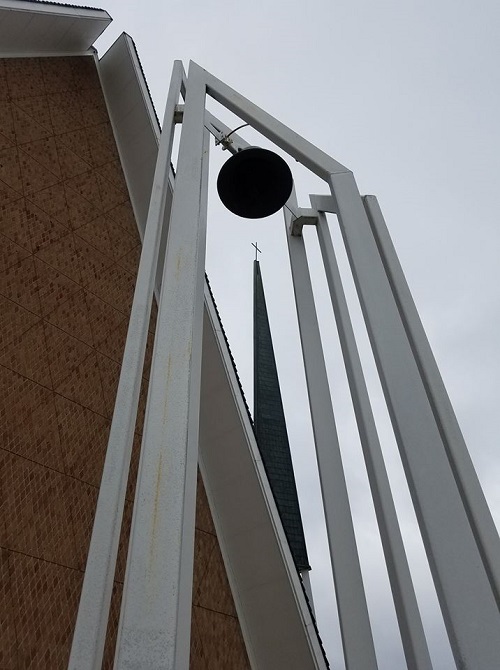 Here’s an underside view of both of our bell towers. In the background, the 1,320 pound bell that rings every day for chapel can’t quite be seen behind the chapel roof, while the bell in the foreground will see a lot more action come May. This bell (called the Springfield Bell) was originally cast in 1882, moved to Fort Wayne in 1976, was found in storage in 1984, and finally hung and dedicated in its newly constructed tower in 1994.
Here’s an underside view of both of our bell towers. In the background, the 1,320 pound bell that rings every day for chapel can’t quite be seen behind the chapel roof, while the bell in the foreground will see a lot more action come May. This bell (called the Springfield Bell) was originally cast in 1882, moved to Fort Wayne in 1976, was found in storage in 1984, and finally hung and dedicated in its newly constructed tower in 1994.